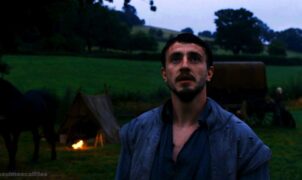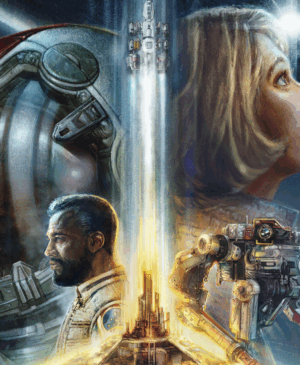SERIES REVIEW – Netflix’s live-action show doesn’t measure up to Nickelodeon’s iconic animated series. Despite its efforts to evoke the original’s ambiance, it fails to capture its magic. The translation of characters and story into the real world loses the unique charm that made the animated series so special.
In Hollywood, there’s no greater pastime than gnawing on the bones of previously successful IPs. Whether a reboot succeeds or not, it’s almost guaranteed to be profitable. When it comes to Avatar: The Last Airbender, industry heavyweights should have learned their lesson the first time. In 2010, Michael Dante DiMartino and Bryan Konietzko’s Nickelodeon program, widely regarded as one of the greatest animated series of the 21st century, was adapted into a film by M. Night Shyamalan. This film is also widely regarded as one of the worst films of the 21st century (we’re talking about a 5 percent Rotten Tomatoes rating). Unfortunately, this didn’t deter Netflix from creating its own flesh-and-CGI adaptation. The best thing that can be said about it is that at least they did a better job than Shyamalan.
A Reimagined World, Merely a Shadow of the Original
Like the original, Albert Kim’s version of Avatar: The Last Airbender is a fantastical adventure story set in a world divided into four elemental cultures: the Water Tribes, the Earth Kingdom, the Fire Nation, and the Air Nomads. In each, certain individuals, known as “benders,” possess the ability to manipulate their element, be it for combat, healing, construction, or flight. Then there’s the Avatar, the eternally reincarnated chosen one who can bend all four elements, tasked with maintaining balance between humanity and the spirits.
When Avatar begins, Fire Lord Sozin (Hiro Kanagawa) declares war on the world. He plans to defeat his opponents one by one, starting with the eradication of the Air Nomads to end the Avatar cycle forever. A hundred years later, the world is still defenseless, and the Fire Nation continues its expansion. It’s revealed that our missing hero, a 12-year-old airbender named Aang (Gordon Cormier), has spent the last century in an iceberg. That is, until Katara (Kiawentiio) and Sokka (Ian Ousley), a teenage sibling duo from the Southern Water Tribe, accidentally thaw him out.
After an icy start, the trio heads north on Aang’s flying bison, aiming for the inexperienced young Avatar to learn to bend the other three elements and perhaps save the Northern Water Tribe from a dire fate. Along the way, Katara works on her waterbending, Sokka flirts with a few ladies, and Aang helps various people they encounter. But it’s not all smooth bison riding for the trio. They’re pursued by Zuko (Dallas Liu), an exiled prince of the Fire Nation who can only return home if he captures the Avatar. Zuko and his Uncle Iroh (Paul Sun-Hyung Lee) are themselves chased by Commander Zhao (Ken Leung), a Fire Nation soldier also intent on capturing Aang – and, as a bonus, defeating the Northern Water Tribe. Meanwhile, Zuko’s father and sister weave their own plots in the palace.
In the Shadow of a Forced Legacy
The series’ creator, Kim (Nikita, Sleepy Hollow), and his team strive to avoid the serious sins committed by the 2010 film. Primarily, that the East Asian and Inuit-inspired animated series’ characters were played almost exclusively by white or Indian actors. In contrast, Netflix’s Avatar offers a cast that reflects the cartoon’s world. This is a welcome and fundamental change. The show tries to recreate the original’s atmosphere with colorful costumes and sets, gravity-defying action scenes, as well as its sense of humor and wonder. The key word here is “tries,” because unfortunately, the effort shows. DiMartino and Konietzko originally joined the adaptation but left in 2020 due to creative differences. And after eight awkward, uneven one-hour episodes, it’s easy to guess their objections.
Like Aang’s airbending, the original 22-minute series effortlessly delivered excellent character arcs, world-building, fight choreography, and wit. It managed to balance lighthearted travel adventures, fast-paced thrills, and serious themes such as family trauma and the moral costs of war. In contrast, this version is filled with stiff acting, slow pacing, robotic dialogues, sometimes successful and sometimes not CGI, and more explanations than an army of earthbenders could handle.
The very first episode is particularly laden with narrative and redundancies, leaving newcomers to the world of Avatar likely caught between confusion and boredom halfway through. (In one particularly cringeworthy scene, Sokka and Katara’s grandmother literally quotes the explanatory dialogue from the cartoon’s opening title). As a gesture to fans, the show attempts to recreate some iconic scenes from the cartoon frame-for-frame: a raging Aang leveling the Southern Air Temple with his airbending, Zuko shooting vivid fire blasts from his wrists in an otherwise colorless world. But these scenes only highlight what’s lost in translation. There are things a animator’s pen can do that digital effects simply cannot.
Lack of Climaxes
While there are some truly impressive sets, like an acrobatic prison escape and a terrifying encounter in the Spirit World, the majority simply feels lifeless. A climactic waterbender vs. waterbender showdown at the North Pole is as exciting as a kiddie pool splash fight. It feels different when adults abuse and attack a cartoon kid, but seeing an aged King Bumi (Utkarsh Ambudkar, in a frightening amount of aging makeup) throw rocks at a real child is hard to digest. These shortcomings might be forgivable if the basics were there. But there’s not much to build on with the terrible writing and acting, which rarely rises above the level of a small-town community theater.
Some performances do stand out from the mire. As a sympathetic anti-hero with an epic character arc, Zuko is one of the original series’ most iconic characters. Though constrained by the script, Liu, known from PEN15, portrays the Fire Prince’s inner conflict adequately, especially in flashback scenes featuring a villainous Daniel Dae Kim as his calculating, abusive father, Fire Lord Ozai. As Ousley grows into his role, he brings some much-needed comic relief to the talkative Sokka character. The rest of the cast, however, stumbles. Many young performers seem lost, while the adults appear simply bored.
Ultimately, it’s hard to say exactly who this version of Avatar is for. Original fans will be disappointed with the show’s charmless, uncanny valley riff on the world they know and love. Newcomers are generally deterred. There’s an argument for live-action versions of beloved animated series; for example, Netflix’s own One Piece is a joyful remix of the classic anime, embracing its cartoonishness with glee. However, Avatar: The Last Airbender tries so hard to carry the weight of its legacy that it ultimately collapses under the strain.
-Gergely Herpai (BadSector)-
Avatar: The Last Airbender
Direction - 4.3
Actors - 6.8
Story - 4.9
Visuals - 6.2
Hangulat - 6.8
5.8
MEDIOCRE
Netflix's Avatar: The Last Airbender live-action adaptation fails to reach the original animated series' magic and depth. Due to forced attempts, stiff acting, and slow pacing, the series fails to captivate either the original fans or new viewers. Despite changes and innovations, the series struggles to breathe new life into the Avatar world, sadly remaining a forgettable attempt to carry on the legacy.














Leave a Reply